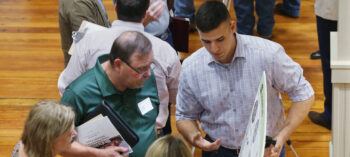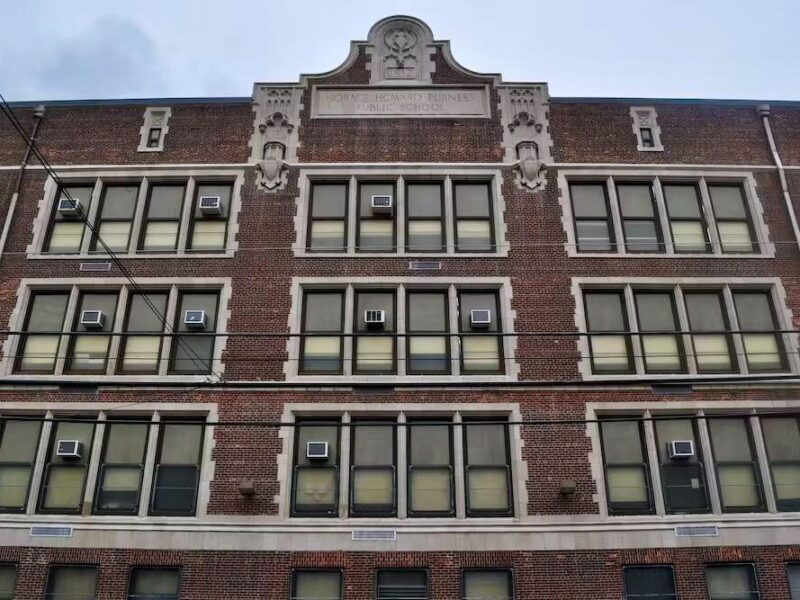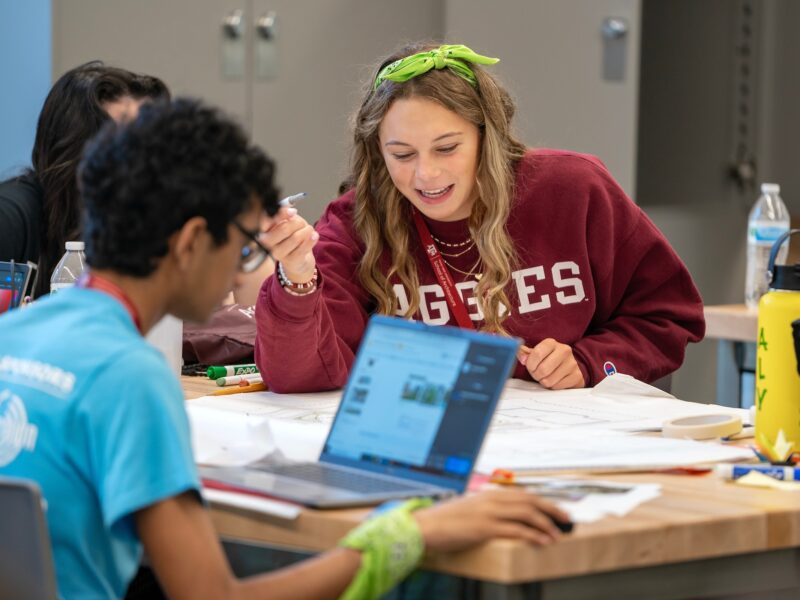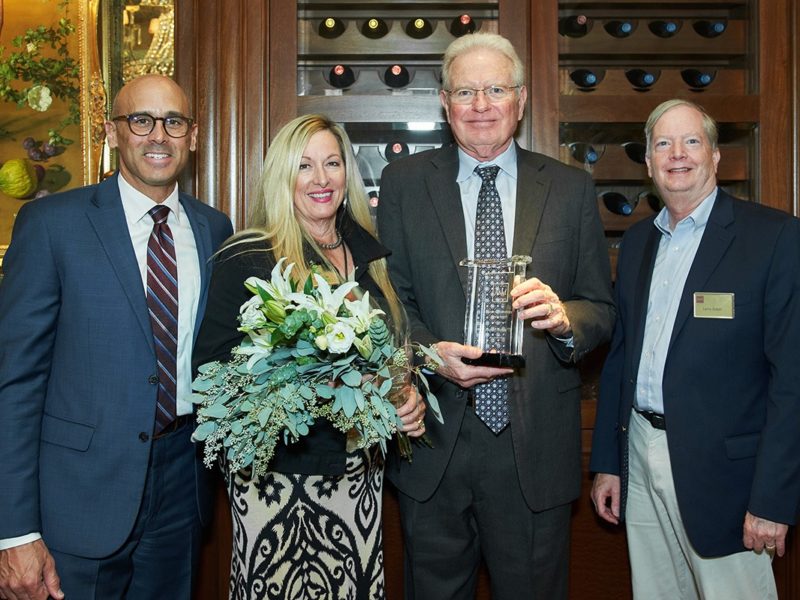Small Towns Have Envisioned Bright Futures For 30 Years With Help From Texas Target Communities

A community’s future is too important to be left to chance.
For 30 years, Texas A&M graduate urban planning students have helped small Texas communities realize brighter futures by partnering with them to create plans that improve their economic and cultural destinies, and their resilience to the growing threat of natural hazards such as flooding and hurricanes.
These collaborations take part in Texas Target Communities (TxTC), a widely revered outreach arm of the Texas A&M School of Architecture. Its partnerships with communities across the state have earned many thanks from municipal officeholders and administrators as well as numerous honors from national and state planning associations.
The honors and accolades acknowledge the important work that TxTC-affiliated students and professors do.
In just the past 10 years, 52 communities across the Lone Star State have benefited from partnerships with TxTC, said Jaimie Hicks Masterson, TxTC director.
These partnerships have included 172 “boots on the ground” meetings, in which community members work directly with students to envision their community’s future. The meetings also include TxTC-affiliated undergraduates and faculty from urban planning, architecture and landscape architecture, as well as students in degree programs outside the School of Architecture — a reflection of how communities’ needs can be addressed by a wide array of disciplines.
“This equates to nearly $11 million worth of planning work that represents more than 365,000 student-hours, 1,745 students and 175 Texas A&M faculty members,” said Masterson.
“Communities are facing really complex challenges, from building resiliency to natural hazards such as flooding and hurricanes, and many others, that affect a wide variety of crucial factors including job availability, the quality of the natural environment, and housing,” she said. “Texas Target Communities exists to help communities respond to those challenges.”
Larger cities have planning staff and additional resources to work with residents to identify their respective city’s most concerning issues and address them by creating a vision for their city’s housing, transportation, parks, industry and other important elements. However, smaller communities lack these resources — the very ones their residents need to envision their town’s future and draw up plans to realize that vision.
An Idea To Help Texas Communities
In 1993, David Pugh, then the coordinator for Texas A&M’s Master of Urban Planning program, directly addressed this fundamental problem that faces many small communities when he founded a program called Texas Target Cities to aid smaller communities that lack planning resources.
“Pugh was very committed to serving the State of Texas. He had done so for many years as a land use lawyer before he joined academia,” said Dr. Shannon Van Zandt, professor of urban planning and executive associate dean of the Texas A&M School of Architecture. “He saw Texas Target Cities as an opportunity for urban planners to serve the state as part of our land grant mission.”
From the outset, the program was a classic “win-win” scenario: communities got much needed help planning their future, and graduate urban planning students got firsthand experience working with communities, identifying a town’s issues and creating plans for the future.
Collaborations That Net Results
In these collaborations, Texas Target Communities students often create what result in large sections of a community’s comprehensive plan — a vision for its future.
Once it’s adopted by a community’s officeholders, a comprehensive plan doesn’t just sit on a shelf. It’s a crucial document that can unlock public funding for projects that community members believe will lead to a better economic, cultural and natural hazard-resilient future for their town.
“Funding agencies want to see that requests from communities come from a longstanding plan, not something that you just dreamed up and submitted an application for,” said Kara Escajeda, city manager in Nolanville, Texas, which partnered with Texas Target Communities to develop a new comprehensive plan that was adopted by the Central Texas community in 2015. “If there’s a proposal in a comprehensive plan, funding agencies know that the proposal was made through community participation.”
“Since the adoption of our comprehensive plan, Nolanville has received $3 million in grant funding,” said Escajeda. “With this funding, we now have a multiuse center that the Boys & Girls Club operates a free afterschool program in. We also have a splash pad, a renovated playground with a track around it, exercise stations geared toward people age 50 and older, a dog park and a community garden. That was all possible because we had a plan.”
A Boon For Students
Texas Target Communities is a crucial element in Texas A&M graduate urban planning students’ education. Participating in a TxTC project is a standard part of the second year of the program.
As participants in TxTC projects, students learn firsthand how the planning process takes place by working side by side with a community’s officeholders and residents in an actual planning project.
“That experience was definitely formative for what I could see myself doing after I graduated,” said Forrest Williams ’16, a former urban planning student who is now director of administrative services in Caldwell, Texas. “Texas Target Communities was definitely my first hands-on planning experience.”
“As a graduate student and team leader in the Texas Target Communities project in Rockport, I helped start the public engagement process, working with the city and residents to learn what the vision of Rockport’s comprehensive plan was going to be,” Williams said. “In the fall, we had two public meetings to identify the key areas and themes the community was focused on. In the spring semester, we started doing scenario planning and actively figuring out implementation action steps to accomplish those goals.”
The plan also addressed residents’ concerns about resiliency to natural hazards such as Hurricane Harvey, which had recently caused widespread damage.
“The plan won a resiliency award from the American Planning Association because it addressed Rockport’s need to reduce damage from future flooding and hurricanes,” said Williams, who looks back on his TxTC experience as something that was central to the start of his career as a planner and administrator.
“You really get an eye-opening, real-world experience working hands-on with a community, which is a benefit that a lot of graduate urban planning students at other universities don’t get,” Williams said. “From a networking standpoint, it helps because you’re able to make connections with actual city/government leaders and staff members. Those connections and networks help you in the future. It definitely helps build a better foundation for a planner before they get into the real world.”
There’s also a bright future for TxTC.
Its outreach activities are part of Texas A&M’s Division of Academic and Strategic Collaborations, a major element of the university’s firm commitment to delivering on its land-grant mission by creating meaningful connectivity among the university and Texas, the nation and the world.
The division, established in 2021, includes more than two dozen programs across 10 units that help create lifelong education and economic opportunities, discover and share solutions to societal challenges, and enrich lives through cultural events and services.
This article by Richard Nira originally appeared on the School of Architecture website.





